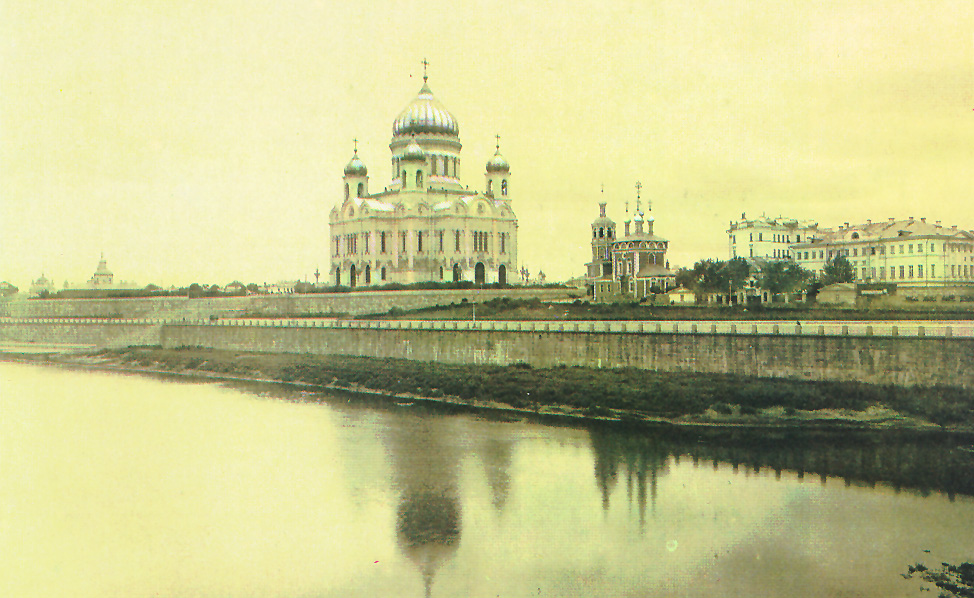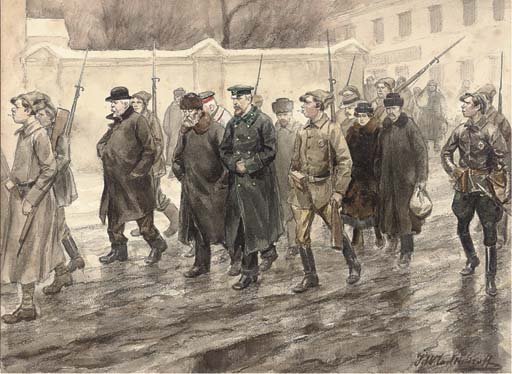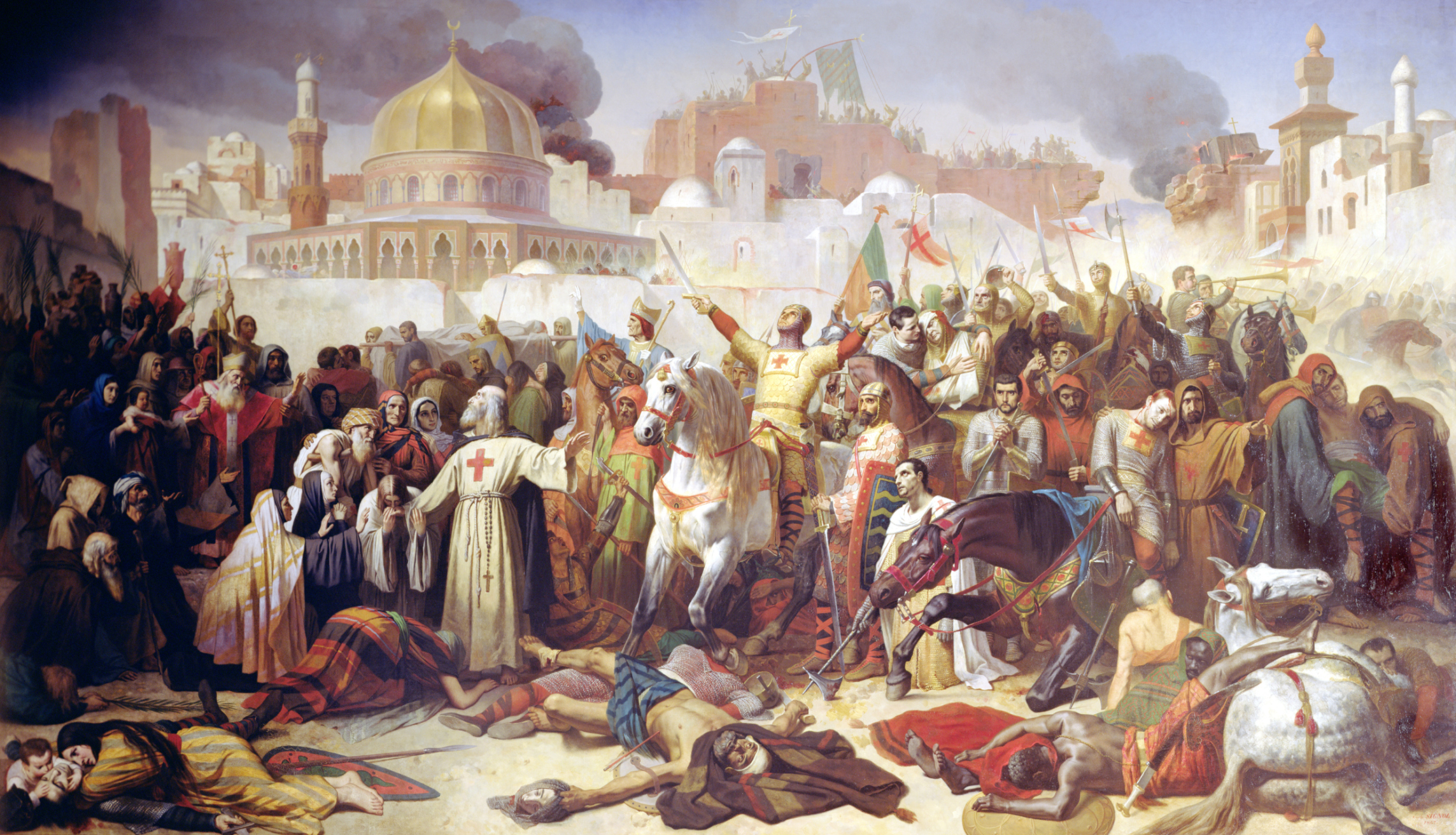|
Atheist (magazine)
Ateist (russian: «Атеист»; lit. «Atheist») was an antireligious monthly journal in Russian, which was published from 1922 to 1930 in the RSFSR and the USSR. The scientific society «Ateist» arose in 1921 in Moscow, on the initiative of P. A. Krasikov and I. A. Shpitsberg in order to promote the best works on criticizing religion. Shpitsberg became the editor-in-chief of the journal. The first two issues of the publication «Atheist» were printed in the form of a newspaper in 1922, in February and March. The format of the newspaper was considered uncomfortable and it was decided to publish a journal. From April 1922 to April 1925 the journal did not go out. The numbers of the journal from 1 to 59 were published from 1925 to 1930. 59 issue of the journal was the last. The main objective of the journal is to highlight the problem of the history of religion and the history of atheism, to print the chronicle of the spread of atheism in the USSR and abroad, as well as trans ... [...More Info...] [...Related Items...] OR: [Wikipedia] [Google] [Baidu] |
Ivan Spitzberg
Ivan Anatolievich Shpitsberg (russian: Иван Анатольевич Шпицберг; 1880 — 1933), was a Russian and Soviet lawyer, journalist, writer, translator, organizer, and head of the scientific society and publishing house Atheist (russian: "Атеист") (1921), and editor of the eponymous magazine. Career Shpitsberg was born into a noble family. He graduated from the Faculty of Law at Saint Petersburg State University in 1906. On 1 September 1906 he became an assistant to a sworn attorney. On 9 June 1912 he became a sworn attorney in St. Petersburg. After February 1917, he worked as an official of the Holy Synod on divorce cases. According to information on 13 March 1917, he was an "employee of the commissariat of the 4 sub-district of the Foundry District" in Petrograd. From January to June 1918, he was "chairman of the Marriage Department of the Foundry District Council" of the Workers' Council and soldiers' deputies, also in Petrograd. Since 1918, he became an an ... [...More Info...] [...Related Items...] OR: [Wikipedia] [Google] [Baidu] |
Voinstvuiuschii Ateizm
Voinstvuiuschii ateizm (russian: «Воинствующий атеизм»; german: «Der kämpfende Atheismus»; eo, «Militanta ateismo»; lit. «Militant Atheism») was an antireligious monthly magazine in Russian, German and Esperanto, which was published in the course of 1931, January to December, in the USSR. League of Militant Atheists began publishing a magazine «Voinstvuiuschii ateizm» in 1931. Dimitry V. PospielovskyA History of Soviet Atheism in Theory, and Practice, and the Believer, vol 1: A History of Marxist-Leninist Atheism and Soviet Anti-Religious Policies, St Martin's Press, New York (1987) p. 61./ref> The magazine was the organ of the Central Council of the League of Militant Atheists of the USSR. P. A. Krasikov became the editor-in-chief of the magazine. This magazine was a replacement for the magazine « Ateist». The editorial board of the journal included Y. M. Yaroslavsky, F. M. Putintsev, A. A. Ivanovskii, E. D. Krinitsky, A. T. Lukachevsky, N. M ... [...More Info...] [...Related Items...] OR: [Wikipedia] [Google] [Baidu] |
Religion In The Soviet Union
The Soviet Union was established by the Bolsheviks in 1922, in place of the Russian Empire. At the time of the 1917 Revolution, the Russian Orthodox Church was deeply integrated into the autocratic state, enjoying official status. This was a significant factor that contributed to the Bolshevik attitude to religion and the steps they took to control it. Thus the USSR became the first state to have as one objective of its official ideology the elimination of existing religion, and the prevention of future implanting of religious belief, with the goal of establishing state atheism (''gosateizm''). Under the doctrine of state atheism in the Soviet Union, there was a "government-sponsored program of conversion to atheism" conducted by Communists. The Communist government targeted religions based on State interests, and while most organized religions were never outlawed, religious property was confiscated, believers were harassed, and religion was ridiculed while atheism was propagate ... [...More Info...] [...Related Items...] OR: [Wikipedia] [Google] [Baidu] |
Religion In Russia
Religion in Russia is diverse, with Christianity, especially Russian Orthodoxy, being the most widely professed faith, but with significant minorities of non-religious people and adherents of other faiths. A 1997 law on religion recognises the right to freedom of conscience and creed to all the citizenry, the spiritual contribution of Orthodox Christianity to the history of Russia, and respect to "Christianity, Islam, Buddhism, Judaism and other religions and creeds which constitute an inseparable part of the historical heritage of Russia's peoples", including ethnic religions or paganism, either preserved, or revived. According to the law, any religious organisation may be recognised as "traditional", if it was already in existence before 1982, and each newly founded religious group has to provide its credentials and re-register yearly for fifteen years, and, in the meantime until eventual recognition, stay without rights. The Russian Orthodox Church, though its influence is t ... [...More Info...] [...Related Items...] OR: [Wikipedia] [Google] [Baidu] |
Red Terror
The Red Terror (russian: Красный террор, krasnyj terror) in Soviet Russia was a campaign of political repression and executions carried out by the Bolsheviks, chiefly through the Cheka, the Bolshevik secret police. It started in late August 1918 after the beginning of the Russian Civil WarLlewellyn, Jennifer; McConnell, Michael; Thompson, Steve (11 August 2019)"The Red Terror" ''Russian Revolution''. Alpha History. Retrieved 4 August 2021. and lasted until 1922. Arising after assassination attempts on Vladimir Lenin and Petrograd Cheka leader Moisei Uritsky, the latter of which was successful, the Red Terror was modeled on the Reign of Terror of the French Revolution,Wilde, Robert. 2019 February 20.The Red Terror" ''ThoughtCo''. Retrieved March 24, 2021. and sought to eliminate political dissent, opposition, and any other threat to Bolshevik power. More broadly, the term is usually applied to Bolshevik political repression throughout the Civil War (1917–1922), as ... [...More Info...] [...Related Items...] OR: [Wikipedia] [Google] [Baidu] |
Persecution Of Muslims
The persecution of Muslims has been recorded throughout the history of Islam, beginning with its founding by Muhammad in the 7th century. In the early days of Islam in Mecca, pre-Islamic Arabia, the new Muslims were often subjected to abuse and persecution by the Meccans (also called Mushrikun by Muslims), a polytheistic Arab tribal confederation. In the contemporary period, Muslims have faced religious restrictions in some countries. Various incidents of Islamophobia have also occurred, such as the Christchurch mosque shootings. Some global conflicts have seen religiously and/or politically motivated belligerents persecute the Muslim population of a region. Notable examples of such persecution have occurred in the Xinjiang conflict in China, the Israeli–Palestinian conflict, the Yugoslav Wars, and many other conflicts. As part of the ongoing Rohingya conflict in Myanmar, the Rohingya genocide has resulted in over 25,000 deaths , the displacement of over 700,000 refugees ... [...More Info...] [...Related Items...] OR: [Wikipedia] [Google] [Baidu] |
Persecution Of Christians In Warsaw Pact Countries
After the October Revolution of November 7, 1917 (October 25 Old Calendar) there was a movement within the Soviet Union to unite all of the people of the world under Communist rule (see Communist International). This included the Eastern bloc countries as well as the Balkan States. Communism as interpreted by Vladimir Lenin and his successors in the Soviet government required the abolition of religion and to this effect the Soviet government launched a long-running campaign to eliminate religion from society.Clark, Joanna Rostropowicz. "The Church and the Communist Power." Sarmatian Review 30.2 (2010) Since some of these Slavic states tied their ethnic heritage to their ethnic churches, both the peoples and their churches were targeted by the Soviets. Across Eastern Europe following World War II, parts of the former Nazi Germany liberated by the Soviet Red Army and Yugoslav Partisans became one-party communist states and the project of coercive conversion to atheism continued. The So ... [...More Info...] [...Related Items...] OR: [Wikipedia] [Google] [Baidu] |
Persecution Of Christians In The Soviet Union
Throughout the history of the Soviet Union (1917–1991), there were periods when Soviet authorities brutally suppressed and persecuted various forms of Christianity to different extents depending on State interests. Soviet Marxist-Leninist policy consistently advocated the control, suppression, and ultimately, the elimination of religious beliefs, and it actively encouraged the propagation of Marxist-Leninist atheism in the Soviet Union. However, most religions were never officially outlawed. The state advocated the destruction of religion, and to achieve this goal, it officially denounced religious beliefs as superstitious and backward. Froese, Paul. "'I am an atheist and a Muslim': Islam, communism, and ideological competition." Journal of Church and State 47.3 (2005) The Communist Party destroyed churches, synagogues, and mosques, ridiculed, harassed, incarcerated and executed religious leaders, flooded the schools and media with anti-religious teachings, and it ... [...More Info...] [...Related Items...] OR: [Wikipedia] [Google] [Baidu] |
Persecutions Of The Catholic Church And Pius XII
Persecutions against the Catholic Church took place during the papacy of Pope Pius XII (1939–1958). Pius' reign coincided with World War II (1939–1945), followed by the commencement of the Cold War and the accelerating European decolonisation. During his papacy, the Catholic Church faced persecution under Fascist and Communist governments. The Nazi persecution of the church was at its most extreme in Occupied Poland. The defeat of Fascism at the end of World War II ended one set of persecutions, but strengthened the position of Communism throughout the world, intensifying a further set of persecutions – notably in Eastern Europe, the USSR, and, later, the People's Republic of China. The Catholic Church was under attack in all Communist governed countries and lost most of its existence in Albania, Bulgaria, Yugoslavia, Romania, Communist China and the Soviet Union (including Estonia, Latvia and Lithuania). Fascist persecutions The Catholic Church was repressed by Nazi German ... [...More Info...] [...Related Items...] OR: [Wikipedia] [Google] [Baidu] |
Demographics Of The Soviet Union
According to data from the Soviet Census (1989), 1989 Soviet census, the population of the USSR was 70% East Slavs, 17% Turkic peoples, and all other ethnic groups below 2%. Alongside the atheist majority of 60% there were sizable minorities of Russian Orthodox Christians (approx. 20%) and Islam in the Soviet Union, Muslims (approx. 15%). History Revolution and Civil war, 1917 - 1923 Russia lost former territories of the Russian Empire with about 30 million inhabitants after the Russian Revolution (1917), Russian Revolution of 1917 (Poland: 18 million; Finland: 3 million; Romania: 3 million; the Baltic states: 5 million and Kars to Turkey: 400 thousand). At least 2 million citizens of the former Russian Empire died in the course of the Russian Civil War of 1917–1923, and a further 1 to 2 million white émigré, emigrated. Great Patriotic War, 1941 - 1945 During the World War II, Second World War on the Eastern Front, the Soviet Union lost an approximate World War II casua ... [...More Info...] [...Related Items...] OR: [Wikipedia] [Google] [Baidu] |
Culture Of The Soviet Union
The culture of the Soviet Union passed through several stages during the country's 69-year existence. It was contributed to by people of various nationalities from every one of fifteen union republics, although a majority of the influence was made by Russians. The Soviet state supported cultural institutions, but also carried out strict censorship. History Lenin era The main feature of communist attitudes towards the arts and artists in the years 1918–1929 was relative freedom, with significant experimentation in several different styles in an effort to find a distinctive Soviet style of art. In many respects, the NEP period was a time of relative freedom and experimentation for the social and cultural life of the Soviet Union. The government tolerated a variety of trends in these fields, provided they were not overtly hostile to the regime. In art and literature, numerous schools, some traditional and others radically experimental, proliferated. Communist writers Maxim Gorky an ... [...More Info...] [...Related Items...] OR: [Wikipedia] [Google] [Baidu] |
Council For Religious Affairs
The Council for Religious Affairs (russian: Совет по делам религий) was a government council in the Soviet Union that dealt with religious activity in the country. It was founded in 1965 through the union of the Council for the Affairs of the Russian Orthodox Church (CAROC) and the Council for the Affairs of Religious Cults. It ceased to exist after the dissolution of the Soviet Union. Background The operations of the Council for Religious Affairs (CRA) became more apparent to scholars outside of the Soviet Union following glasnost and an opening of the Soviet archives. The CRA was a result of a renewed assault against religion, which started under the Khrushchev era, even though the CRA was not created until after his deposition. Letters from individual parishes express their frustration and alarm at a wave of new attacks starting in 1959, before the CRA was formed. Concerns came from both non-Orthodox and Orthodox figures, including Patriarch Alexy I of Mos ... [...More Info...] [...Related Items...] OR: [Wikipedia] [Google] [Baidu] |

.jpg)




